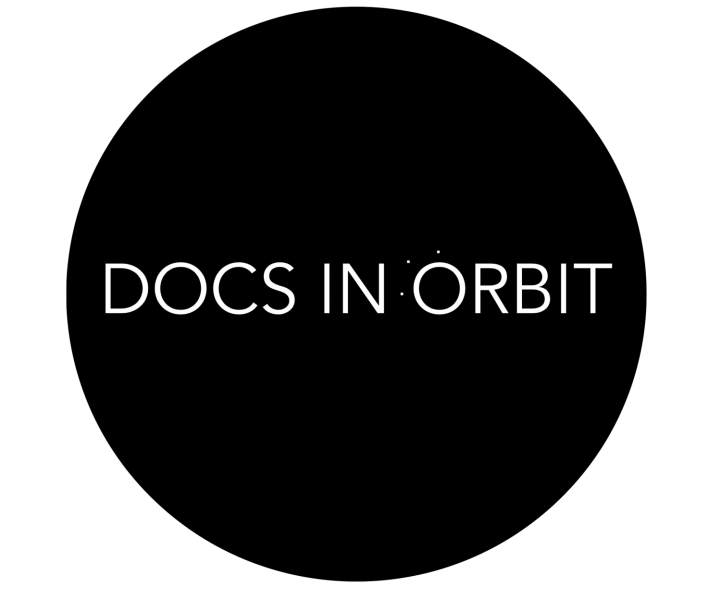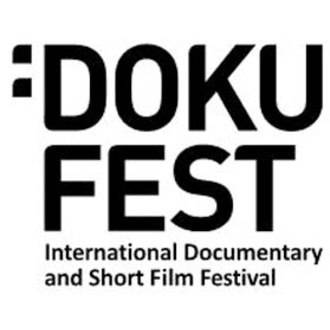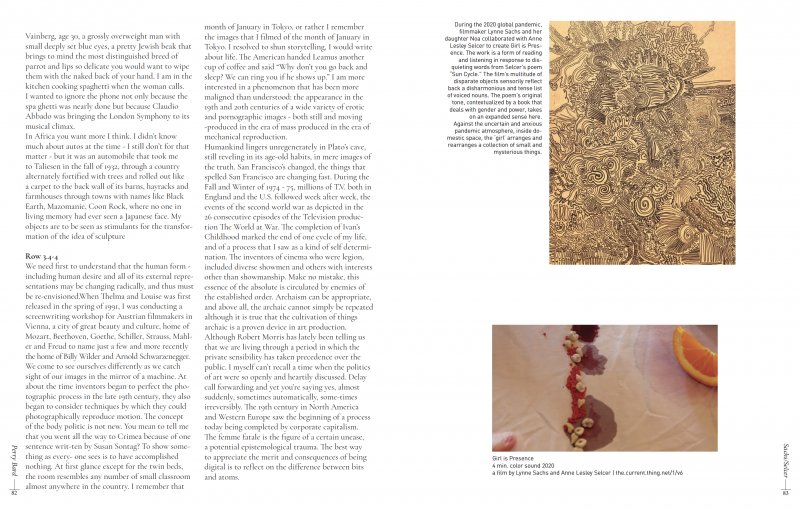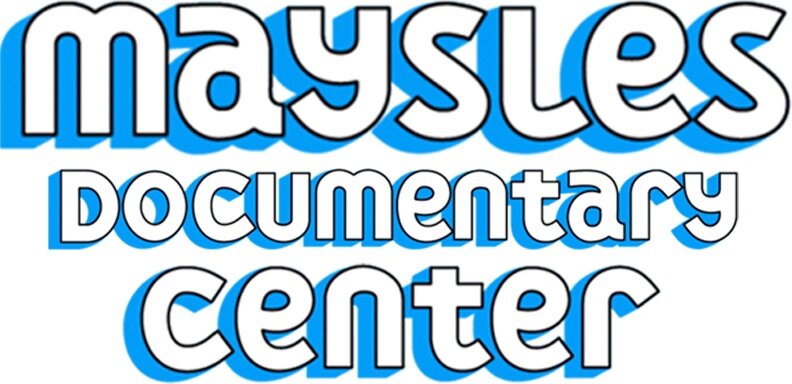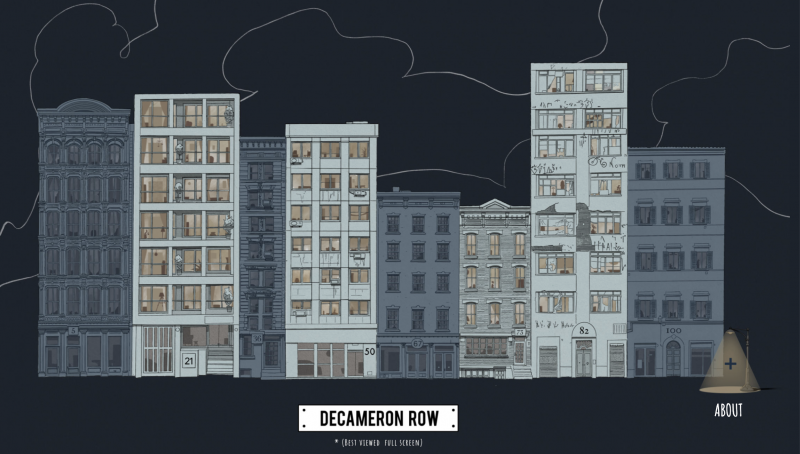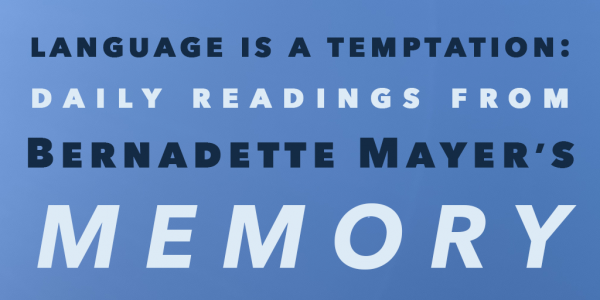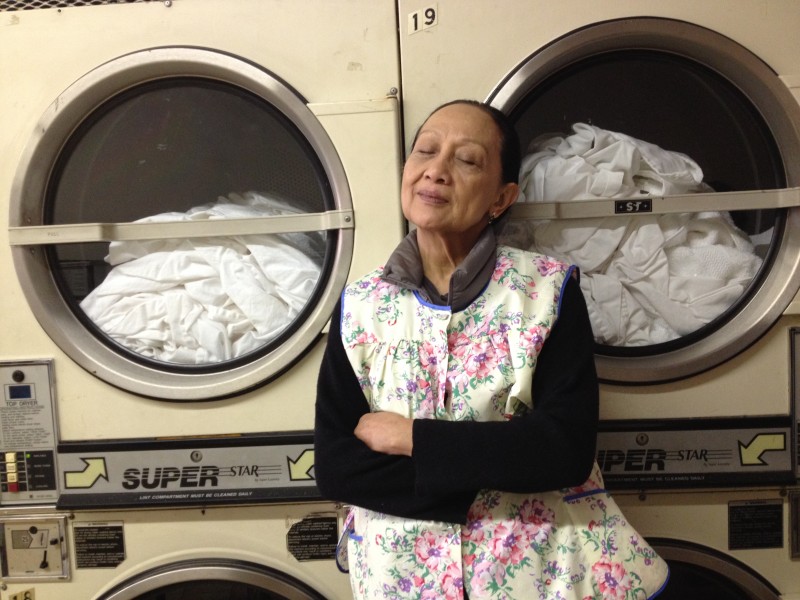
Next Big Picture
08/18/2020
By Bianca Garner
https://www.nextbestpicture.com/latest/uncertain-times-what-is-the-future-of-the-film-festival
This year has not been a kind year for the film festival. Several major film festivals including Cannes and Telluride have been canceled as a result of the current coronavirus pandemic, and rightly so. We can probably all agree that the idea of thousands of people from across the globe gathering in one place, standing shoulder to shoulder, and sitting tightly packed inside a small dark room for long periods, is the perfect breeding ground for a virus as deadly as COVID-19.
Some film festivals still took place at the start of the year, most notably Sundance and Berlinale. However, a report from the Hollywood Reporter stated that this year’s Sundance Film Festival could have been the “first petri dish” for the spread of the virus with many attendees reporting coronavirus-like symptoms after attending the festival. However, it is worth mentioning that according to the festival organizers, they are “not aware of any confirmed festival-connected cases of Covid-19.”
The postponement of Cannes this year marks the first time since 1968 that the festival hasn’t taken place since the end of the Second World War. Coincidentally, the festival didn’t take place in ‘68 due to nationwide student protests. When asked about whether or not the festival could take place virtually, Festival director Thierry Frémaux stated that it “wouldn’t work”. However, festivals such as CPH:DOX did make the transition from physical to virtual, with festival organizer Tine Fischer stating, “If we had not gone online I’m not sure that we would have survived.”
And, while we have heard from the major film festival organizers, what about the film critics who have been affected by the coronavirus situation and how has it impacted their film festival experience? Well, I felt compelled to seek out people and ask them about their thoughts regarding the impact that coronavirus has had on the film festival circuit, as well as what the future has in store for the film festival experience. If film festivals were all to make the transition from the physical form to the vertical/digital form, would we not lose something truly unique? Attending film festivals is a major way to network with film industry individuals and allows filmmakers to exhibit their films in the hopes of being picked up for distribution. The right amount of festival buzz can make (or break) a film. Could this be achieved in a digital sense or would we miss out on that special act of social interaction?
Personally speaking, I believe the best outcome is for film festival organizers to host smaller scale festivals once restrictions ease. By controlling the number of attendees, festivals could enforce social distancing quite easily. However, the next question would be – who would be allowed to attend the festival if a limitation of attendees was enforced? Ask any aspiring critic about how strict the restrictions and regulations are for the press accreditation process and they will more than likely express their frustrations. Would film festivals become even more restrictive and selective in terms of what level of film critic and/or industry professional they allow to attend?
Since the pandemic, I have been able to cover Sheffield Documentary Film Festival (a festival I attended last year in person), Edinburgh Film Festival, review films for SXSW, and I hope to help in covering Fantasia Film Festival as well. Being able to access the films via the online Doc Player for the Sheffield Documentary Film Festival made things a lot easier. There were no anxieties about organizing travel and accommodation, no rushing around to make sure I got to the screenings on time. I could simply sit at home on my sofa all day and watch the films I wanted to see and not worry about having to pick and choose films. However, I missed the networking and social interaction aspect of attending a film festival.
Inspired by my own experiences of attending film festivals in the past, and thoughts about the future of film festivals, I decided to reach out to a few fellow film critics and also ask some filmmakers about their thoughts on the matter. Kathia Woods recently covered the AFI Documentary Film Festival which took place online. “It was kinda nice to see the films without standing in line,” she says. “I miss connecting with my fellow critics. A nice part of the festivals are the Q&A [sessions] afterward.”
Woods isn’t the only film critic to have attended a festival in the virtual sense; however, in the case of film critic Alex Billington, his experience wasn’t exactly a straightforward one. “So far the only film festival I’ve tried to cover online is the Annecy Film Festival (the top animation festival in France). It was a disaster,” he explains. “Online festivals are temporary solutions, but definitely do not compare in any way to actual festivals. They said all of their films would be available online. But after logging in I discovered only half were available, the rest were only 10-minute clips. Watching a few of them by myself, at my home, without anyone to talk to about them wasn’t very exciting. I know it’s the only way to run a festival during this pandemic, but it has been a very bad experience so far.”
While Billington had a bad experience with the Annecy Film Festival, critic Cameron Ward’s experience was far more enjoyable. “For Annecy Online, my experience was very positive,” he says. “I don’t have the finances to take a trip to France and the expenses that come with that, so being able to experience the world of animation from the comfort of my home with no real schedule to keep track of was refreshing. If I could afford to go to Annecy France to attend the physical festival, I would. But with everything going on, it wouldn’t have been possible anyway. Going online was a way for animation fans and critics alike to get a taste of seeing what the animation scene from around the world was working on.”
However, even Ward has to admit that “attending festivals in person is fun since you will get the chance to meet the directors, teams, and actors for the films in question, and see new films before anyone else for the most part.” He also explains the cons of physical festivals, but the pros always outweigh them. “[Festivals are] a lot to plan out with schedules to execute, making sure you get your questions answered, walking back and [forth] to different screenings, and sitting down for two or so hours. Like I said above, the pros of it all are being able to see new films, experience the audience reactions, getting to meet the directors in person, and being able to talk to them.”
Critic Max Borg – who I had the pleasure of meeting at this year’s Berlinale – spoke about the prospect of more festivals becoming digital. “Going digital – if we’re talking post-COVID times – should be something that enhances the existing festival experience, rather than replacing it,” he explains. “We’re already seeing that now with Venice electing to be 100% physical (presumably due to rights issues) and Toronto doing a hybrid edition where only some of the films will be available online. I don’t think the online version is much of an incentive to be honest because all of the ones I’ve covered had some kind of restriction, be it geoblocking or some films being unavailable (the latter happened with Annecy, where some of the feature films were not viewable in full unless you were a jury member). And everyone I’ve spoken to about this said the same thing: they miss getting to interact with a physical audience.”
Certainly, the idea of missing out on the human/social interaction side of film festivals seems to be a consensus that most critics I spoke to shared. Awards Watch founder and owner, Erik Anderson, explains that “removing the audience element of festivals and filmgoing misses out on certain key components about film itself.” He continues by saying, “I can watch a movie alone in my living room and laugh at funny parts or jump at scary parts, but more often than not those are less likely to happen or happen with less fervor as an individual. It’s great to gauge how funny a joke is by the audience response or hear someone crying when an earned tearful response happens.” However, Anderson made a very good point which I think we should all consider: “There is a great advantage to people with difficulties or disabilities that would be able to enjoy these films and that’s an undeniable plus.”
Critic Caitlin Kennedy spoke about the accessibility of film festivals, drawing my attention to the fact that not all critics are as privileged as those who work at a professional level. “Traveling to film festivals puts a great burden on time and finances and not all critics or fans have the resources to meet that burden,” she explains. “It’s nice to have the option to interact with film festivals that I previously had no relationship with because it has been made convenient to do so. Of course, with accessibility comes a lack of exclusivity. That “special” feeling of being in a small crowd, limited by time and space, to be the first to experience a film goes away, but we’re at a point where it’s more important than ever for those opportunities to be accessible. Film should not operate under the limitations of privilege. No art should, honestly.” Kennedy’s words certainly gave me food for thought and made me realize how privileged I have been this year to have been able to attend Berlinale.
We have heard that many major film releases such as “Black Widow” and “No Time to Die” have had their release dates pushed back, but what about the future of independent films especially those who were due to be screened at festivals such as SXSW and Telluride? What are their thoughts on the future of the film festival and do they have any concerns about festivals making the transition to the virtual world?
Danny Mendlow, the producer of the documentary, “Never Be Done: The Richard Glen Lett Story,” expressed his thoughts about digital vs. physical film festivals. “There’s no comparison in my mind. It’s like comparing watching a basketball game on your TV at home to sitting next to Spike Lee in the front row of Madison Square Garden. It’s that different,” he states. “You can watch the Super Bowl at home, sure, but how can you compare that to a tailgate party and seats at the 50-yard line? You can watch a hundred really well-produced documentaries of Woodstock, but if you weren’t there in person, you didn’t get to go hang out with Jimi Hendrix after he played ‘The Star-Spangled Banner’. So I’m not trashing digital/online film festivals, I think they have an important place in things, and obviously, we are all being catapulted into a more digital world, but there’s just no comparison to what a live, in-the-flesh film festival offers. I mean, I’ve been to rooftop Turkish Film Parties at TIFF or Louisiana Film Parties at Sundance and there’s no universe that skyping into either would’ve been comparable in any way.” Mendlow goes on to add that “attending as a filmmaker and film fan is fun and party hopping and networking, but there’s nothing like attending as a filmmaker or team with a good movie that people like screening at the fest.”
David Lawson, the producer of “She Dies Tomorrow,” also shared his thoughts. The film was scheduled to be screened at SXSW but the festival was sadly canceled. Luckily, Lawson and his team were “extremely fortunate to already have a sales/PR team around the film that had anticipated this as a possibility.” He continues by explaining that they “screened the film for a small group of distributors and press outlets in NY and LA and were extremely fortunate to come out of that situation with NEON picking up the film for distribution.”
Lawson makes a good point which I didn’t even consider: the issue of piracy. “The obvious and biggest disadvantage to me on online film festivals is the potential for piracy,” he says. “I think that should be every festival’s number one concern when opting for a digital version. I’m not sure that everyone is aware that most films at a festival haven’t been sold yet, and if a film ends up on a torrent platform it could destroy the ability for that film to recoup its money, and thus hurting a filmmaker/investor’s future potential in film.”
Gavin Booth, the director of “Last Call,” says that, as a filmmaker, he’s “losing the ability to meet other filmmakers, actors, and creative people.” He says that his favorite thing at any festival is meeting peers. “The energy and excitement of talking to creators fuels my own creativity and often you are meeting your fellow creators. There’s a sort of summer camp aspect to it where you find your circle of people at any given festival and share meals, laughs, screenings, and are able to support and promote one another’s festival events.” Booth also stressed the point of directors missing out on the audience’s reaction to their film. “It’s nice to see what works and doesn’t work with the film. When a film is at a festival, it’s finished, but hey, if you see a real sticking point that audiences don’t respond well to, there’s a hail mary chance to go in and adjust the film before you attempt to find distribution for it.”
In a similar fashion to film critics, Booth agrees that the experience of watching the film with a collective audience is something that would be greatly missed if more festivals took place in a digital sense. “Virtual screenings are no different to watching Netflix or renting a movie on iTunes,” he explains. “What we will lose in terms of a viewing experience at festivals is the community. A community of filmmakers supporting one another’s work as well as each festival’s loyal audience that enjoys taking in new independent cinema. It definitely is more accessible. This can be looked at either way. It’s a great benefit that more than a few hundred people at a time in a cinema can see these films premiere, but at the same time, it’s taking some of the mystique away from the buzz a film gets at a festival and then that buzz is used as a groundswell marketing campaign to help bring the film to the masses upon traditional release.”
Lynne Sachs – whose documentary feature “Film About A Father Who” screened digitally at Sheffield Doc/Fest and whose short “A Month of Single Frames” screened at Oberhausen, Dokufest in Kosovo, Sydney Underground Film Fest, and the Gimli Film Fest in Canada – says that going online may be a good thing. “For smaller festivals, I think there were some very gratifying and democratizing aspects to going online. I was on the jury at the Ann Arbor Film Festival in March this year. They quickly pivoted to an online experience and the results were truly breathtaking,” she says. “Basically, hundreds of filmmakers with work in the festival were able to watch the entire festival and participate in live Q and A’s from literally all over the world! My fellow judges and I spent an intense week on Zoom watching all of the films and discussing them. We felt extremely close after this, not only because we connected via our film viewing, but also because we were bonding during one of the most horrific shared times in world history.”
I also asked Lynne Sachs about her thoughts on the advantages and disadvantages of film festivals becoming more virtual, and whether or not that was the right direction to go. She believes that “a hybrid model is really the way to go.” “Our society has become far too dependent on air travel which is expensive, elitist, and terrible for the environment,” she continues. “Ever since I attended my first film festival in the late 1980s, I have loved my experiences participating in all aspects of this very special convergence of cinephiles. But, I also think that we must recognize that the cost of traveling with your film divides those filmmakers with additional financial means from those without. There are so many festivals that just don’t have the budget to pay for airfares, lodging, and food for their participating artists. So, the burden of participating face-to-face lands on the filmmaker who has already probably spent money for the festival submission fee. This is absolutely unfair. Adding a virtual component to a festival enlarges audience and artist participation.”
Communicating with my fellow film critics, and also corresponding with filmmakers, really helped me gain a greater insight into how the cancellation of film festivals due to the COVID-19 pandemic has impacted the film industry in a way that goes beyond the headlines. Hopefully, film festival organizers will take the opportunity to reach out to filmmakers and critics alike, as well as film festival attendees, to ask for their input, recommendations, and thoughts about the future of the film festival. One can only hope that we can all come together to support film festivals large and small, as well as indie filmmakers and film critics (at all levels) to maintain our love and appreciation for the film festival spirit. Personally speaking, I’m even beginning to miss the early morning queues at the London Film Festival which I used to moan about all the time. It’s funny how you miss the little things in life.
Editor’s note: The interviews included in this piece have been edited for clarity.

